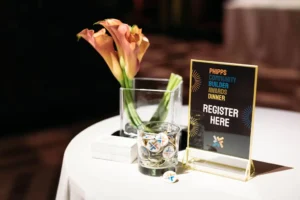After nearly a year and a half of uncertainty and anticipation, in-person events are finally finding their way back onto Americans’ schedules and social calendars. While many are overwhelmingly ready to jump back in to attend parties, concerts, weddings, and other crowded events, others are still hesitant to go back to the in-person format while the virus continues to claim lives around the world. Still more may feel comfortable with live events but prefer the comforts of home rather than the hassles of travel and face-to-face interactions.
Even if you’re lucky enough to have a lot, after this year, many people have realized that they do not need much of anything at all. Good health for yourself and your loved ones is really all that matters.
Some have wondered if live events are still a necessity for fundraising efforts when virtual gatherings are far less costly and require less elbow grease to plan and execute. While this is often true, there are distinct advantages that in-person events have over purely virtual endeavors. First and foremost, live events give the hosts control over the atmosphere and energy of an event; virtual components must compete with what is going on in the background of attendees’ homes, such as children, media playing simultaneously during the event, and other ‘background noise’ that limits the engagement of viewers. This disconnect virtual attendees feel limits the personal connection they feel towards the cause during the event; leading to fewer donations and in smaller amounts.
However, this doesn’t mean that virtual events should be done away with completely. Virtual events offer the advantages of engaging donors from a wider area geographically, as well as offer an option to those who may not be able to commit to the time for a live event but would like to be a part of the action remotely. Pre-recorded virtual components also offer the unique opportunity for organizations to utilize recordings of celebrity supporters and board member endorsements for other uses, such as on a website or for future events.
Creating a hybrid event with both in-person and virtual components isn’t as simple as live-streaming the in-person event to an online audience. A true hybrid event seamlessly integrates technology to bring an online audience into the event experience.

Like a live attendee, the virtual participant should have a variety of opportunities to participate and interact with the event. This can be done by allowing virtual audience members to interact with speakers, engage with other attendees and event content, and participate in Q&A sessions.
Hybrid events are a relatively new endeavor for the events industry; event professionals are working tirelessly to find the best format for hybrid events. There are a variety of ways hybrid events can be run:
- A traditional in-person event with an online component where at-home guests can view the program, chat with other online attendees, and participate in the silent auction and live appeal.
- Offering “virtual tables” and sponsorships so guests could view and connect with others while those attending live are dining. Sponsors have the opportunity to receive both live and virtual sponsorship recognition.
- Incorporating vendors (ex. photo booth, mixologist) to be displayed both live and virtually for all guests.
- Small dinner parties where guests are encouraged to come together and view the livestream together.
Hybrid events give a special challenge to the fundraising events industry to create new and exciting ways to engage with donors and create memorable experiences for all attendees. For those of us here at Powered by Professionals, we are especially eager to jump back in to create top-tier events with everything we learned during the biggest challenge the events industry has ever faced. Stay tuned for examples of PBP hybrid events, and please let us know if we can help you produce a hybrid event.
SARAH COYNE
sarah@poweredbyprofessionals.com





No comment yet, add your voice below!